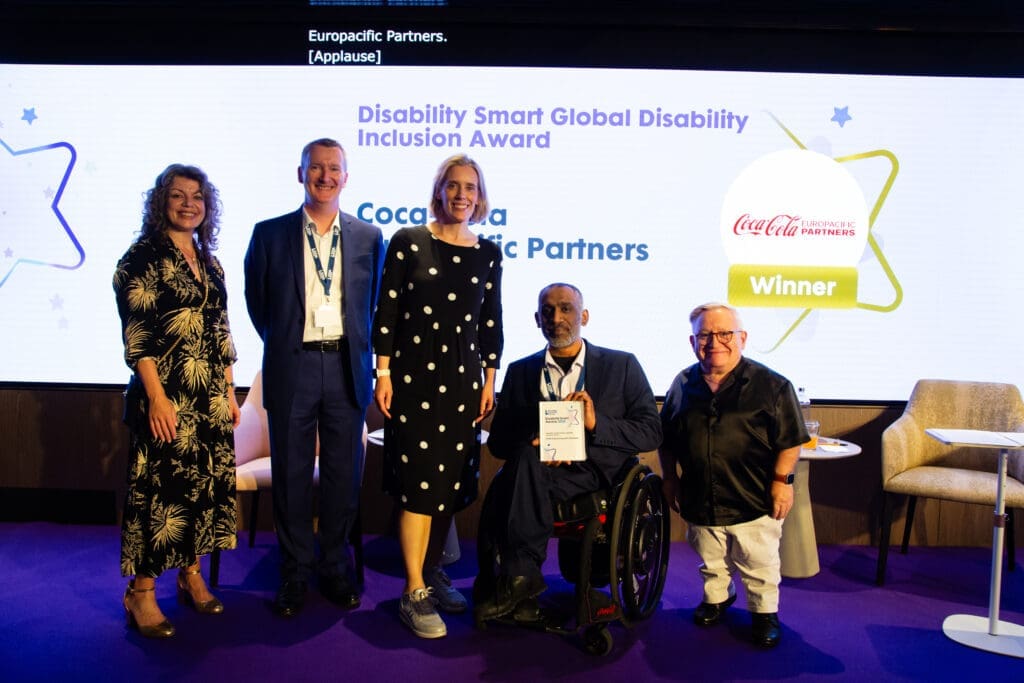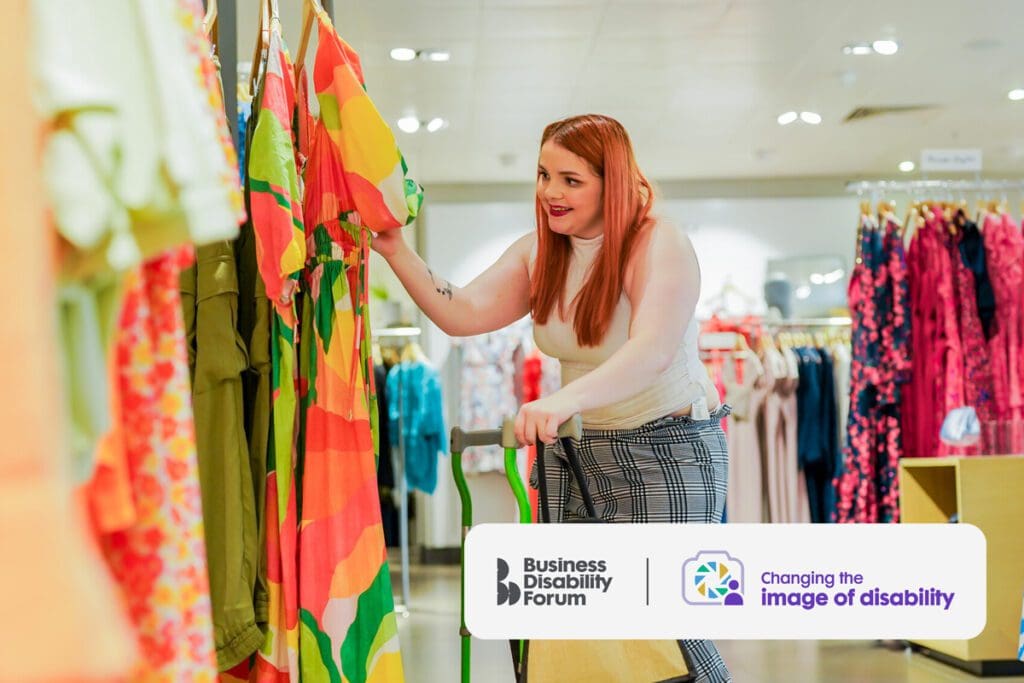Coca-Cola Europacific Partners: The Accessibility Matrix
Coca-Cola Europacific Partners won the 2025 Disability Smart Global Disability Inclusion Award. Read the case study below.

Coca-Cola Europacific Partners: the Accessibility Matrix
About Coca-Cola Europacific Partners
Coca-Cola Europacific Partners (CCEP) is one of the world’s leading consumer goods companies. It makes, sells and distributes some of the world’s most loved drinks (including Coca-Cola, Fanta, Sprite and Monster) in 31 markets around the world.
The challenge
CCEP felt that not enough focus was being placed on disability inclusion across their industry, especially in the manufacturing environment where there’s often perceived challenges with creating accessible workplaces.
They sought to develop a solution that would both translate complex accessibility regulations into straightforward guidance and accommodate managers with many competing responsibilities.
The project
The Accessibility Matrix is a step-by-step guide to accelerating accessibility in the workplace. It was designed internally by CCEP’s Inclusion Team in partnership with AccessAble and in collaboration with CCEP’s Disability & Neurodiversity Working Group (which is made of people with disabilities and allies from Spain, Great Britain, France, Sweden, and Belgium). The tool was also reviewed by Business Disability Forum.
The key components of the Accessibility Matrix are:
- A self-assessment questionnaire to help organisations identify their current strengths and areas needing improvement in terms of accessibility.
- A strategic planner, which provides a structured approach to planning and implementing accessibility improvements.
- A communication tool, which facilitates effective communication of accessibility plans and progress to all stakeholders.
With leadership guidance, a focus on cultural change and inclusion of practical examples, the Matrix Covers various aspects of accessibility, such as hiring processes, signage and wayfinding. It simplifies legal jargon and intricate procedures to help organisations stay compliant and implement changes.
CCEP positions the Matrix as a tool for continuous improvement, encouraging repeat review and updates, reflecting the evolving needs of workforces and evolution of accessibility practices.
The tool had such a positive impact internally that CCEP decided to share it with other organisations, making it available to download on their website. Download CCEP’s Accessibility Matrix.
The result
The use of the Accessibility Matrix has had a direct impact on CCEP’s processes and culture, such as the adoption of assistive technologies and the creation of content in different formats across the organisation.
CCEP’s Edmonton manufacturing site has undergone significant modifications, such as new automatic doors, improved signage and lower work surfaces. The site is now 75% wheelchair accessible.
By helping to identify and remove barriers to employment, the Matrix has also created more opportunities for disabled individuals to join the CCEP workforce: the number of disabled people hired has tripled in Spain and doubled in France.
Overall visibility of CCEP’s commitment to disability inclusion has also increased internally. In their global inclusion survey, the number of employees comfortable sharing their disability has increased from 40% to 98%.
Going forward
Every country in CCEP has committed to completing the Matrix for at least one site or head office by April 2025, and to have an action plan in place.
10+ manufacturing sites in Great Britain, Spain, France, Sweden, the Netherlands and Norway are making accessibility improvements to their workspace, plus head offices in Germany, Australia, and Bulgaria.
As a free and open-source tool, the Accessibility Matrix will continue to contribute to improving disability inclusion in organisations across the world.
If you require this content in a different format, contact enquiries@businessdisabilityforum.org.uk.

